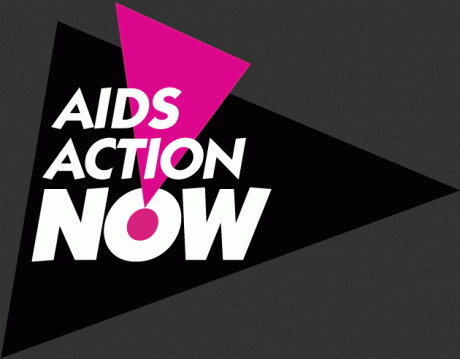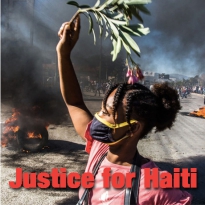Reports
You are here
United in action to overcome HIV/AIDS

November 30, 2012
In the lead-up to World AIDS Day and a Day With(out) Art on December 1 there will be numerous events in communities across Canada commemorating past struggles, surveying the current lay of the land, and anticipating future developments in confronting the HIV/AIDS pandemic.
One such event was held in Toronto on November 27 at the Art Gallery of Ontario. It was organized by AIDS Action Now! (AAN), a grassroots group formed in 1988 “to look at problems of medical care, access to drugs and research facing people with HIV in Toronto.” The event was a free screening of a recently produced documentary film called United in Anger: a History of ACT UP, and was followed by a panel discussion featuring past and present members of AAN.
The film itself is well produced and chronicles the formation of the AIDS Coalition To Unleash Power (ACT UP) in New York City in 1987 and its activity over the subsequent years, focusing mostly on events from 1987 to 1992—the height of the AIDS crisis in North America.
Much of the archival footage used in the film was originally created by lesbian, gay, bisexual and transgender (LGBT) people themselves out of a desperate need to overcome either blackouts or gross distortions in the mainstream media regarding HIV/AIDS. This material was not only used to counter the mainstream narratives which only fueled AIDS hysteria and homophobia, keeping most people completely in the dark about the facts of HIV transmission thereby allowing infections to spread even faster, but also to educate the communities themselves which at that time seemed to be most at risk of infection. This was media created by people with or at risk of HIV/AIDS for themselves and as such it allowed for diversity in voices to be heard and stories to be told, and to be done so with unfettered creativity—something unknown in commercial media.
This archival footage of ACT UP meetings, demonstrations, rallies and actions, some of which were incredibly effective (both practically as well as emotionally) not to mention withering in their criticisms of existing power structures, was interspersed with recent interview footage of participants from those days—far too few of whom are still with us. A fair amount of the film focuses on how ACT UP organized, as well as the tactics and strategies involved in its activity, with some analysis all these years on of its relative effectiveness and it is within these scenes where the film is most useful for activists today.
After the film screening, a panel consisting of former and current AAN members spoke about their various experiences with organizing around issues related to HIV/AIDS in Toronto.
Many topics were covered in a brief amount of time: from the founding meeting of AAN to the creation of various committees focusing on specific areas of work such as outreach, advocacy, education, health and legal issues; from tiny actions of only a half dozen people to massive actions like the “die-in” during the Lesbian and Gay Pride Day march in the early 90s when Yonge Street was filled—from Bloor to Dundas—with the bodies of thousands of people lying down to represent those who had died or were living with HIV/AIDS; from its beginning as a mostly LGBT-identified movement to the formation of groups such as Voices of Positive Women and broadening the scope of AIDS activism to include other at-risk communities like injection drug users; from recounting past struggles around funding for research and access to treatment to anticipating future struggles around increasing criminalization of HIV-positive people.
While there seemed to be a consensus that everyone should get involved in AIDS Action Now!, AIDS activism, or activism in general, only one panelist made an explicit appeal for more people to become activists. However, her focus on direct action suggested that it was the only way for people to get involved. But two other panelists shared experiences that showed how ordinary people radicalize in the course of struggle and, as a result, become effective activists for a better world. These examples offered rich lessons and inspiration for activists today.
One was a man who identified himself at the time of his partner’s infection with HIV many years ago as a “middle-class, educated, bourgeois, gay, white male.” He admitted that it wasn’t until his partner was ill and needed treatment but wasn’t able to get the kind of care they were used to that he realized our “universal” healthcare system doesn’t work equally for all people, something most women, immigrants, racialized, disabled, poor and indigenous people know all too well. It was his personal experience which brought him to AIDS activism, showing that not only does consciousness change but that it changes rapidly during times of struggle.
Another was a woman who identified as HIV-positive. She talked about how AAN became well known for its “demos and documents.” They held actions that were critical of the inherent inequities within existing social structures and that were effective in drawing attention to issues relating to AIDS and HIV-positive people, paving the way for others to get involved. They produced materials that were respected for being more useful and better researched than many of those from health or legal “professionals.” These shining examples of creativity and self-activity allowed AAN to intervene more effectively in the AIDS crisis and present workable solutions.
It is with these lessons in mind that we as activists—whether around issues of HIV/AIDS or otherwise—can take heart. The answers to the most challenging problems lie within ourselves but will only be realized through the united struggle of our class—the working class—which includes people of all races, genders, sexualities, ages and abilities fighting for the common goal of ridding our world of the capitalist system which exploits us in order to build a new and better world, one in which we are all valued and contributing members, allowed dignity, treated with respect, nurtured and cared for—a world that is in the interest of us all.
For a brief history of AIDS activism in Canada, read AIDS Action Now co-founder Tim McCaskell's recent article here.
Section:
- Log in to post comments










